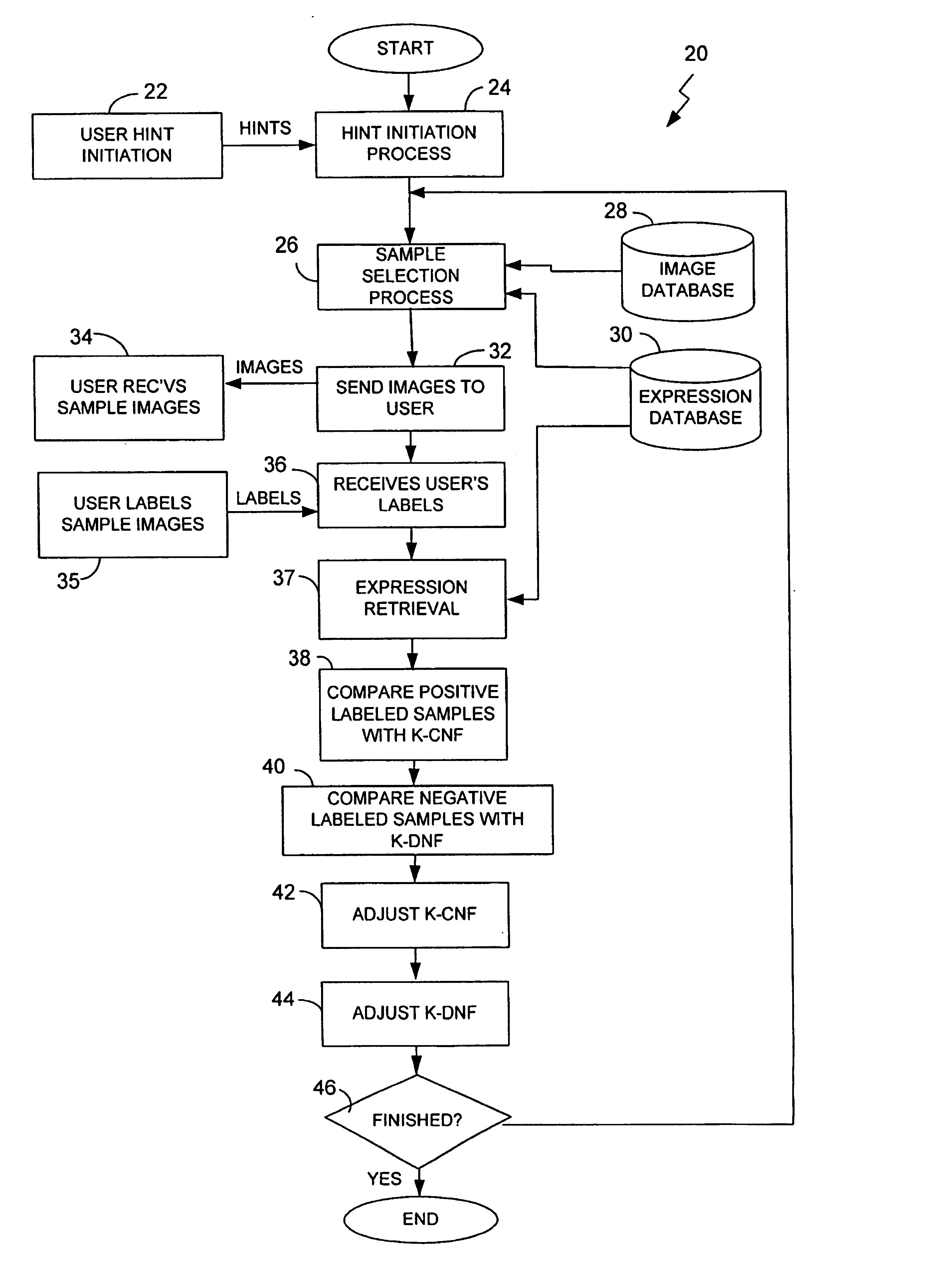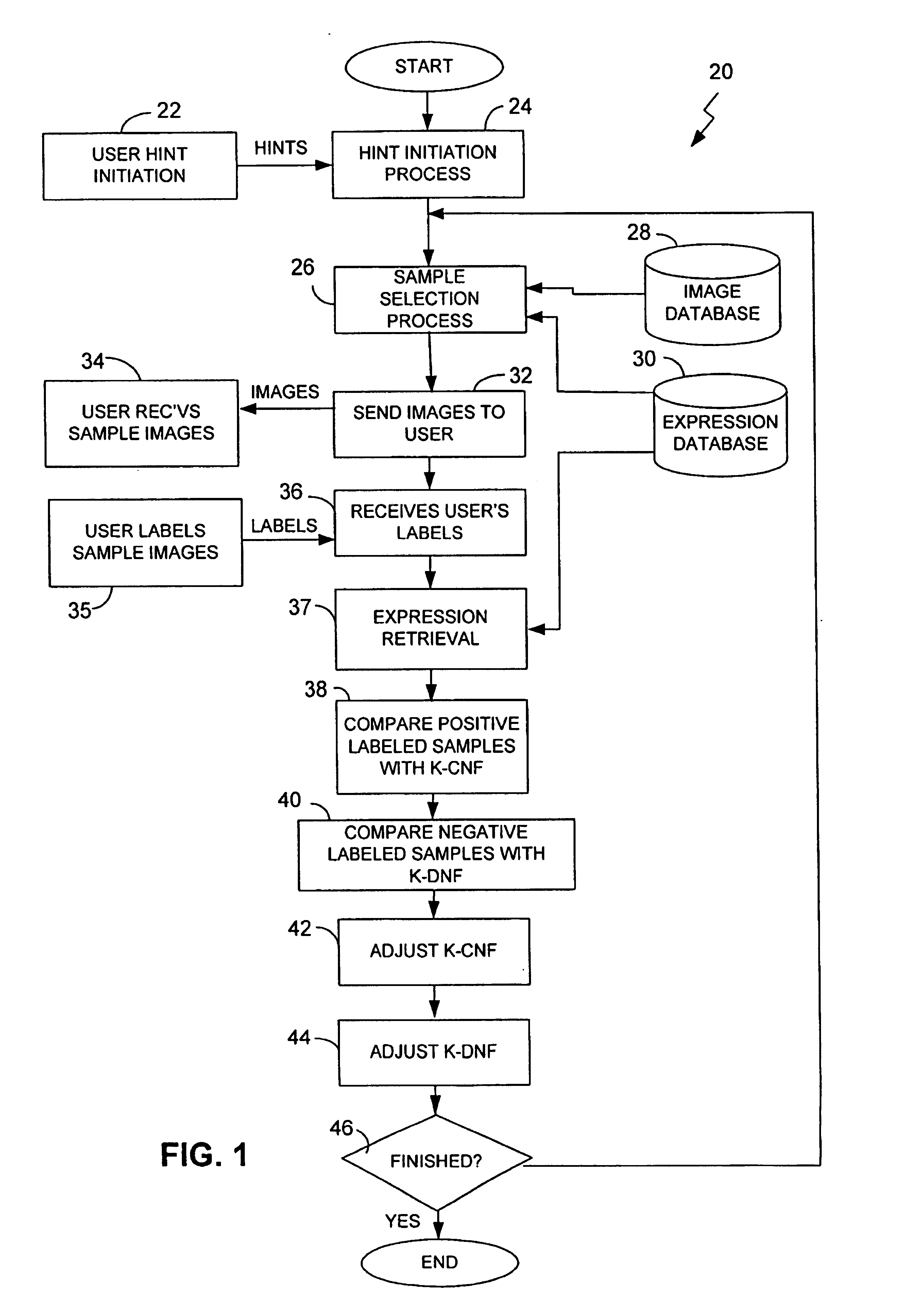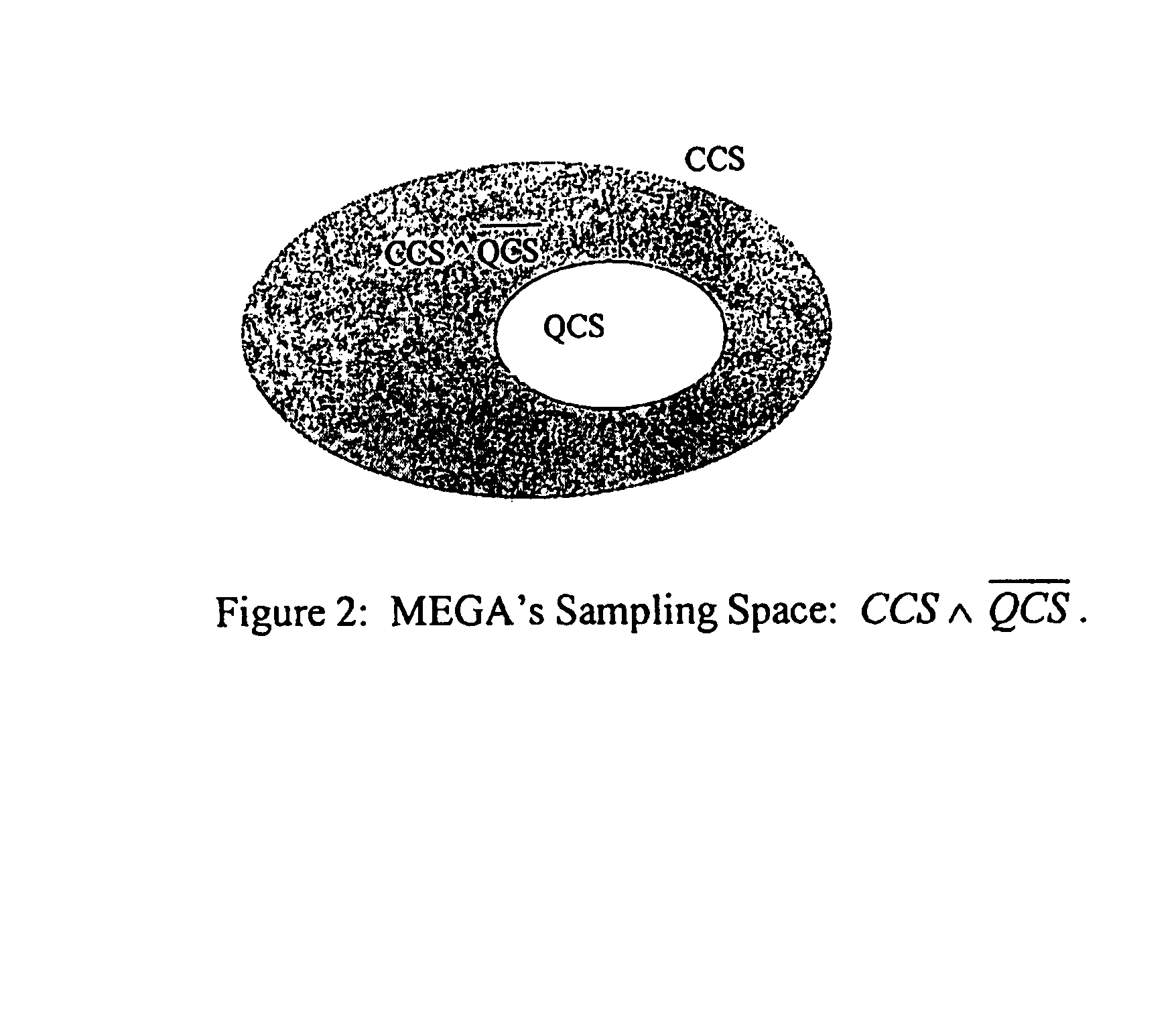Maximizing expected generalization for learning complex query concepts
a query concept and expected generalization technology, applied in the field of information retrieval, can solve the problems of difficult articulation of query concepts, inability of database systems to effectively conduct a search, and subjective articulation
- Summary
- Abstract
- Description
- Claims
- Application Information
AI Technical Summary
Benefits of technology
Problems solved by technology
Method used
Image
Examples
Embodiment Construction
Introduction
[0028]To learn users' query concepts, the present invention provides a query-concept learner process and a computer software based apparatus that “learns” a concept through an intelligent sampling process. The query-concept learner process fulfills two primary goals. By “learns,” it is meant that the query-concept learner process evaluates user feedback as to the relevance of samples presented to the user in order to select from a database samples that are very likely to match, or at least come very close to matching, a user's current query concept. One, the concept-learner's hypothesis space must not be too restrictive, so it can model most practical query concepts. Two, the concept-learner should grasp a concept quickly and with a small number of labeled instances, since most users do not wait around to provide a great deal of feedback. To fulfill these design goals, the present invention uses a query-concept learner process that we refer to as, the Maximizing Expected...
PUM
 Login to View More
Login to View More Abstract
Description
Claims
Application Information
 Login to View More
Login to View More - R&D
- Intellectual Property
- Life Sciences
- Materials
- Tech Scout
- Unparalleled Data Quality
- Higher Quality Content
- 60% Fewer Hallucinations
Browse by: Latest US Patents, China's latest patents, Technical Efficacy Thesaurus, Application Domain, Technology Topic, Popular Technical Reports.
© 2025 PatSnap. All rights reserved.Legal|Privacy policy|Modern Slavery Act Transparency Statement|Sitemap|About US| Contact US: help@patsnap.com



